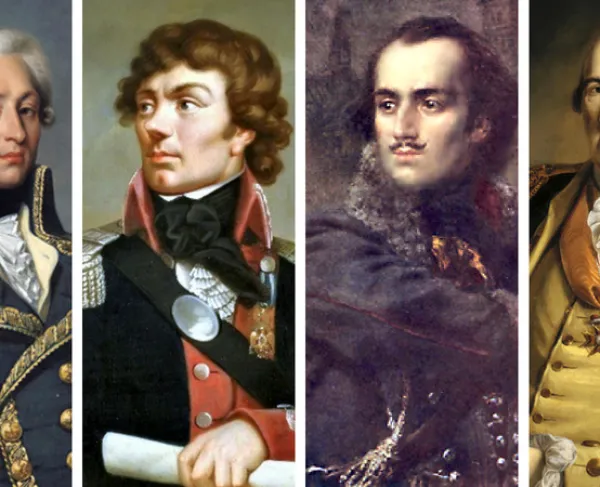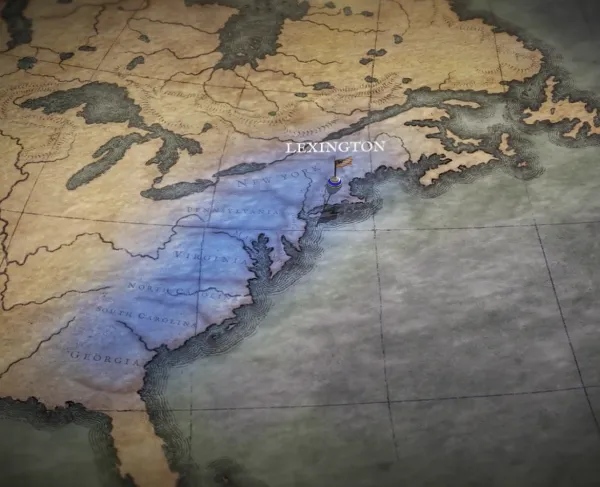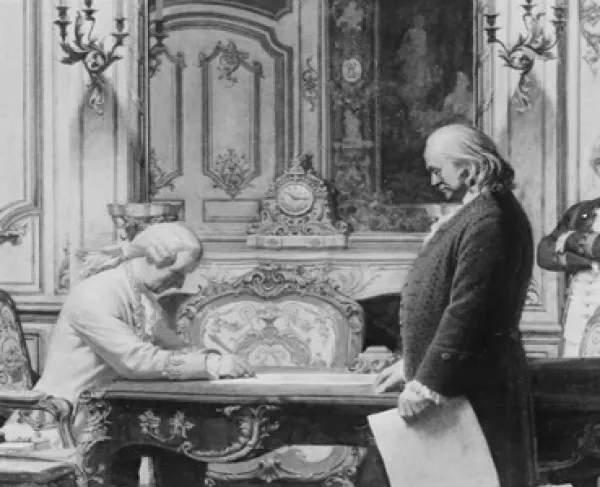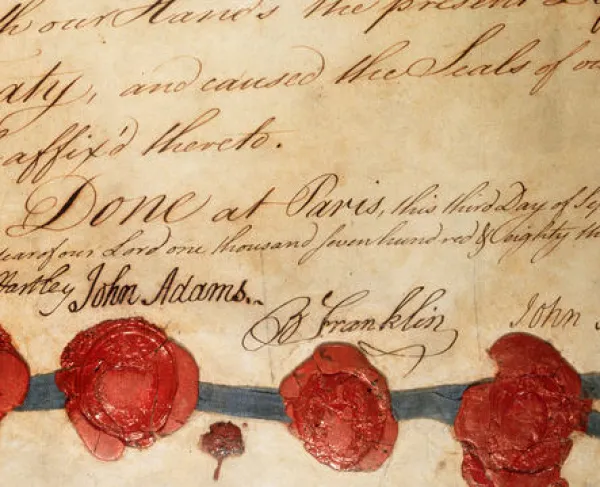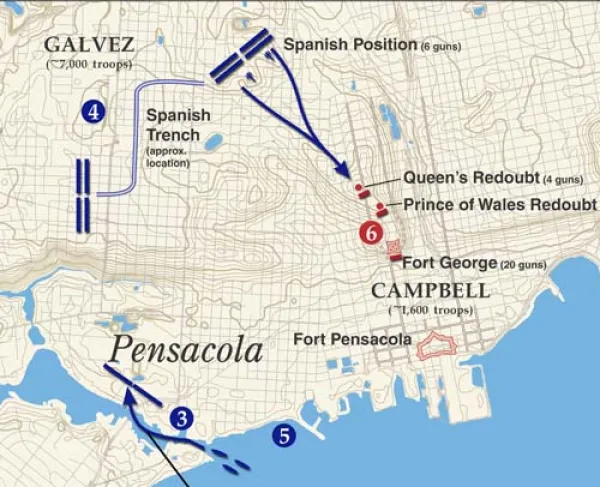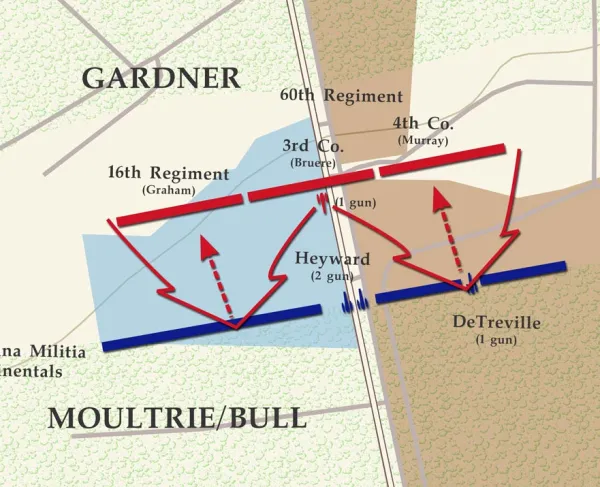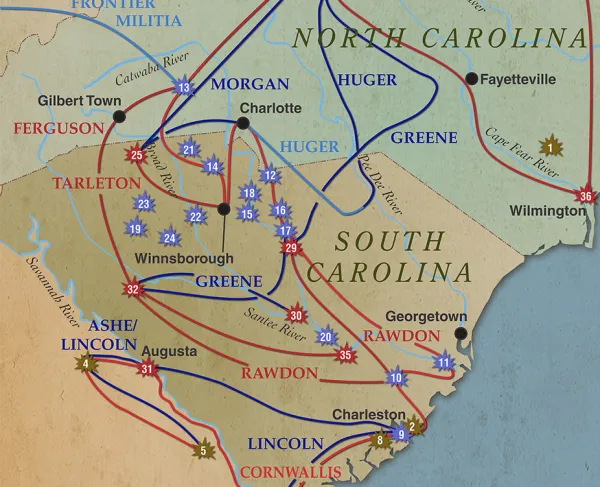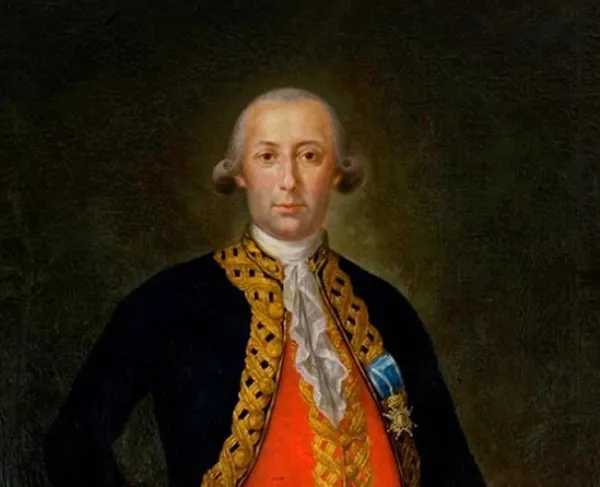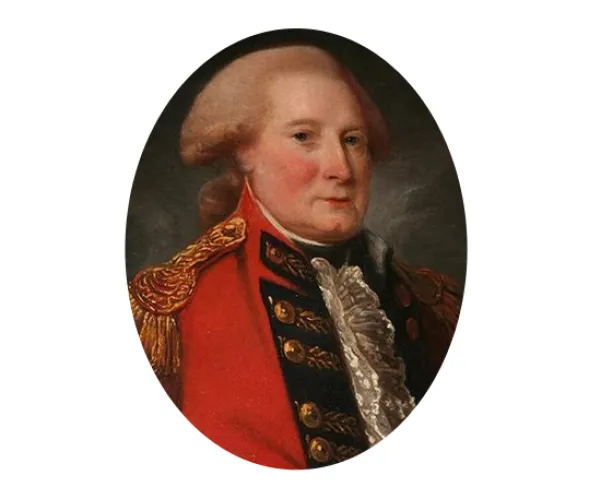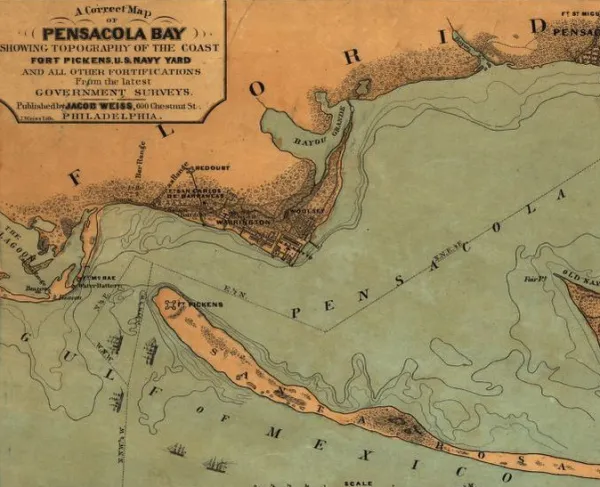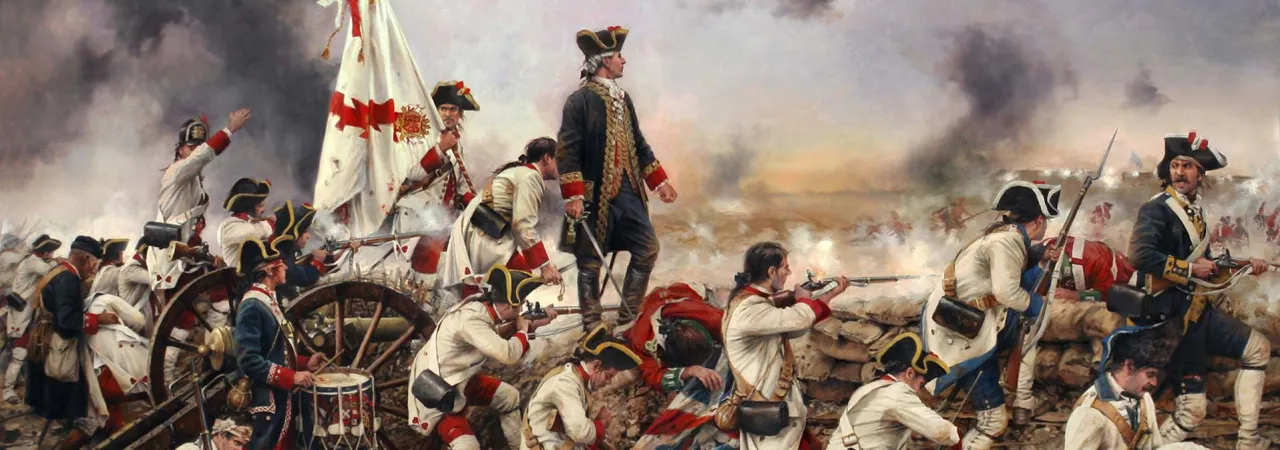
The Spanish forces led by Bernardo de Gálvez at the Siege of Pensacola.
Siege of Pensacola
Escambia County, FL | Mar 9 - May 10, 1781
As supporters of the Patriot cause during the revolution, the Spanish took up arms to defend against the British and further their gains on a competitive world stage. They participated in an extensive campaign along the Gulf Coast, which culminated in the 1781 Siege of Pensacola. The siege began in March of that year and continued until May, with the Patriot-advocating Spanish facing off against the British for control of Pensacola.
The defenses of Pensacola had experienced many tactical improvements in the years leading up to the siege. This effort was led by the British, who had taken control of Florida in 1763 following the French and Indian war. As a variety of military threats loomed on the horizon, the British built forts, stockades, and redoubts.
The Spanish were keeping the British on their toes, occupying nearby New Orleans, Natchez, and Baton Rouge. The Spanish General Don Bernardo de Gálvez aggressively sought to capture another British holding, leading him to pursue Pensacola.
On his way to Pensacola, Galvez led a force of 40 ships and 3,500 men west along the Gulf of Mexico to Mobile Bay. There Galvez laid siege to British Fort Charlotte, a stronghold in what is today’s Mobile, Alabama. With a Spanish victory there, the fort was garrisoned with Spanish troops and a second fort was built across from Mobile Bay. Referred to as the “Spanish Fort,” this locale became the spot for General Gálvez to regroup and strategize in preparation for an attack on Pensacola. Leaving behind a contingent of men to garrison the new forts, Gálvez sought out troops and fresh supplies in Havana, Cuba.
Gálvez finally mobilized his fleet toward Pensacola after attaining sufficient troops and supplies. On March 9th, 1781, the fleet arrived at Santa Rosa Island near the entrance of Pensacola Bay. The first attempt at entering the bay went awry when the Spanish flagship ran aground. Naval officers warned Gálvez against making a second try, but ever the determined and aggressive general, he sailed the flagship Galveztown into the bay himself, on March 18th, 1781. The remainder of the Spanish fleet followed behind.
The British Royal Navy Redoubt, a five-faced battery made from earth and logs, attempted to counteract the Spanish fleet’s movement. While the British main army gathered in Fort George, to prepare for a siege, Gálvez was hard at work moving men and artillery into place from the west.
Putting a literal damper on Gálvez’s plans, a storm halted conflict. The storm was a precursor to another type of storm, one of artillery and cannon fire on both Spanish and British sides!
The majority of April included many small-scale skirmishes, making way for incoming large-scale conflict. Reinforcements had arrived to enlarge the Spanish threat, leading to a total of approximately 7,800 men. In opposition, British forces stood at roughly 2,000 men. With reinvigorated forces, Gálvez positioned a battery on a hill within range of Fort George, and opened fire on May 5th, 1781. The British responded in kind, starting a chain of heavy fire.
The Spanish used trenches and batteries to wear down British defenses. The British answered by overrunning and destroying one of the batteries. Nevertheless, the siege continued.
After 4 days of ruthless firing, a Spanish shell hit a powder magazine in the Queen’s Redoubt on May 8th, 1781, destroying the fort and killing approximately 100 British soldiers. With an opportunity in reach, Spanish troops moved to occupy the ruinous Queen’s Redoubt and placed artillery at the location. With artillery in place, the Spanish opened fire on Fort George at short range. No longer capable of defending Fort George from unforgiving Spanish artillery, British General John Campbell raised the white flag of surrender on May 8th, 1781.
Pensacola officially came under control of the Spanish on May 10th, 1781. It would remain in control of the Spanish for the next 40 years… yet not always a strong control.
Siege of Pensacola : Featured Resources
Related Battles
7,000
3,500
272
1,320
